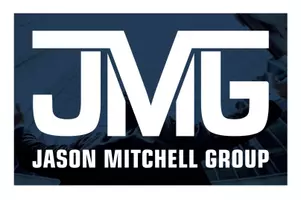As the Seidler family explores a sale, the Padres are considered ‘beachfront real estate’
The Seidler family is considering a sale of the San Diego Padres.
Selling the club first became a possibility when former chairman Peter Seidler died two years ago on Friday. Those odds likely increased in January, when Seidler’s widow, Sheel, sued for control of the team. Her court filing sought to vacate any actions taken by the trust that owns 24% of the Padres, including the trust’s naming of Seidler’s brother, John, as the club’s control person. That litigation remains pending, with no new court filings since late May.
It was John Seidler who announced Thursday that the family was beginning “a process of evaluating our future with the Padres, including the potential sale of the franchise.”
Forbes valued the Padres at $1.95 billion before the start of the 2025 season, while recent MLB team sales have been completed at about 5½ times a team’s annual revenue. One source placed the Padres’ annual revenue at $500 million, meaning the total value could push toward $2.75 billion.
The potential end of an era prompts all kinds of questions.
Which member of the ownership group first wanted to explore a sale? Do the others have enough money to buy that person out?
How intent on selling are the Seidlers?
And who could possibly buy the Padres?

Starts and stops
The Seidlers’ “evaluation” could mark the start of a long road ahead.
If recent history is any indication, the path might not lead anywhere.
The Pohlad family explored a variety of options over a 10-month period before announcing in August that the Minnesota Twins were no longer for sale. When potential buyers were unable to meet the family’s reported asking price of $1.7 billion, the Pohlads instead brought on new investors.
Likewise, the Washington Nationals were on the market for nearly two years when the Lerner family decided in February 2024 to hang onto the franchise. The Los Angeles Angels were on the market for five months when, in January 2023, owner Arte Moreno reversed course and decided to keep the club.
Five MLB teams have been sold since a group spearheaded by heirs of former Los Angeles Dodgers owner Walter O’Malley bought the Padres in 2012 for $800 million, a price that included the assumption of nearly $200 million in debt and another $200 million out the door from the recently signed $1.2 billion cable deal.
The Dodgers were sold in 2012 to the Guggenheim group for $2.15 billion, a precursor to a nearly $8 billion deal with Time Warner Cable.
Steve Cohen paid even more — $2.4 billion — for the New York Mets in 2020.
Even small-market teams are getting top dollar.
The Miami Marlins were sold to a group led by Bruce Sherman and Derek Jeter for $1.2 billion in 2017, and the Kansas City Royals went for $1 billion to a group led by John Sherman in 2019. David Rubenstein bought the Baltimore Orioles for $1.725 billion last year, and a group led by Patrick Zalupski purchased the Tampa Bay Rays for $1.7 billion in late September.

‘You evaluate everything’
Whatever the Padres sell for this time around will include the assumption of about $300 million in debt and more than $150 million in paybacks to minority owners for two cash infusions in recent years, as well as all the selling points that come with the Padres’ place in both the landscape of Major League Baseball and Southern California.
“You evaluate everything,” said Marc M. Stern, a Greenberg Glusker partner who was intimately involved in the Donald Sterling trust dispute that led to the sale of the Los Angeles Clippers in 2014. “What things can I make better, where can I make more money and where is the operation already at a maximum?”
Neither Stern nor Corey Martin, a managing partner at Granderson Des Rochers and chair of its entertainment finance practice, view the Padres’ debt as a red flag. The money owed still owed to Manny Machado ($301 million), Fernando Tatis Jr. ($286 million) and Xander Bogaerts ($200 million) could be viewed as the “cost of doing business,” Martin said, although those particulars depend on the rest of the team’s commitments and revenue streams as they relate to the next collective bargaining agreement.
Meantime, various unknowns — from a potential work stoppage when the CBA expires after 2026 to MLB’s plans to centralize all 30 teams’ local TV rights into a digital rights package by 2028 — are near-term considerations for what’s viewed as a long-term investment.
“It’s an enterprise value play,” said Martin, whose firm represented rapper J. Cole joining a group that purchased a majority stake in the Charlotte Hornets from Michael Jordan in 2023. “Obviously, you’ll look for ways to extract money out of the business, but for the most part, people are looking at opportunities where the internal rate of return will be measured against what the business ultimately sells for down the road.”
The Padres have already more than doubled in value under the Seidler stewardship. And on the field, it’s hard to find a better run of success in franchise history.
The Padres have qualified for the playoffs in back-to-back seasons and four times in the last six years. They have set franchise attendance records in three consecutive seasons and rank in baseball’s top 10 when it comes to non-media local revenue. San Diego’s proximity to Mexico and the Padres’ investment in players from Japan, South Korea, Taiwan and other countries has given the club global reach.
It could be as turnkey as it gets, but “you still need to put money in (the club) to perpetuate it,” Stern said.
The question now is, who could do that?

Finding the right fit
BTD & MSD Partners, the financial firm guiding the Seidler family, could start by looking at who has come up short in recent bids to buy other MLB franchises.
Ted Leonsis, the owner of the Washington-based Wizards, Capitals and Mystics, made an offer of more than $2 billion before the Lerners decided to keep the Nationals. Billionaires Mat and Justin Ishbia, owners of the Phoenix Suns and Mercury, were potential Twins buyers before the club was pulled off the market. Justin Ishbia has since agreed to a long-term investment framework with White Sox owner Jerry Reinsdorf. Golden State Warriors principal owner Joe Lacob and Los Angeles Times owner Patrick Soon-Shiong were rumored to be interested in the Angels before Moreno changed his mind. Lacob worked as a peanut vendor at Angel Stadium while attending Anaheim’s Katella High School and UC Irvine.
Among the billionaires in San Diego, Brooklyn Nets owner Joe Tsai has a home in La Jolla and counts the San Diego Seals lacrosse team among his stakes in several sports franchises. He denied a reported involvement in the Mets’ 2020 sale and does not have a known stake in an MLB team.
Neither does former Dallas Mavericks majority owner Mark Cuban, although he’s made attempts in the past to buy the Chicago Cubs (2007), Texas Rangers (2010) and Los Angeles Dodgers (2011). The 67-year-old businessman and TV personality has since shifted his sports interests to Harbinger Sports Partners, a private equity group looking to spread out $750 million between five and 15 assets, each with no more than a 5% stake.
Ares Management and Arctos Sports Partners are also hedge funds and private-equity firms that have pursued interest in teams. Arctos already counts a minor stake in the Padres among its six MLB investments.

Why buy?
The reason for growing interest in owning teams follows simple supply-and-demand economics.
“It’s analogous to beachfront real estate,” Martin said. “In any prominent community, there’s only so many houses right on the beach. That’s what makes them a trophy asset. … There’s only so many to go around.”
And now the Padres are on the market.
Categories
Recent Posts










GET MORE INFORMATION


